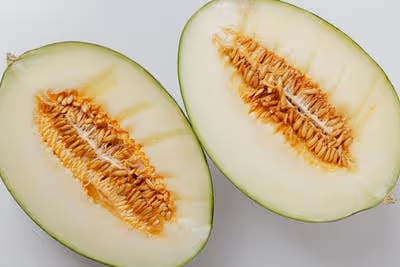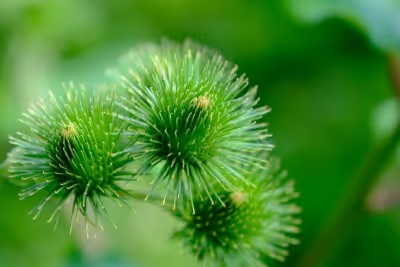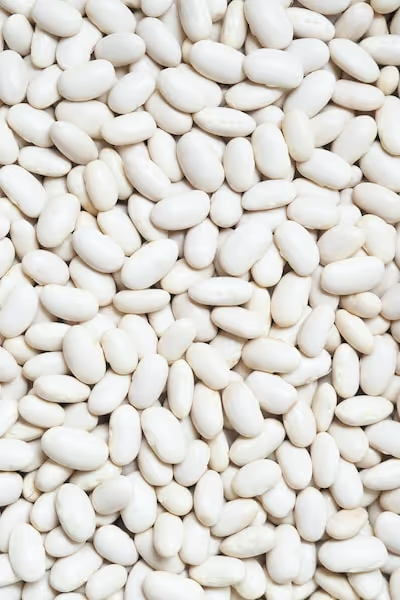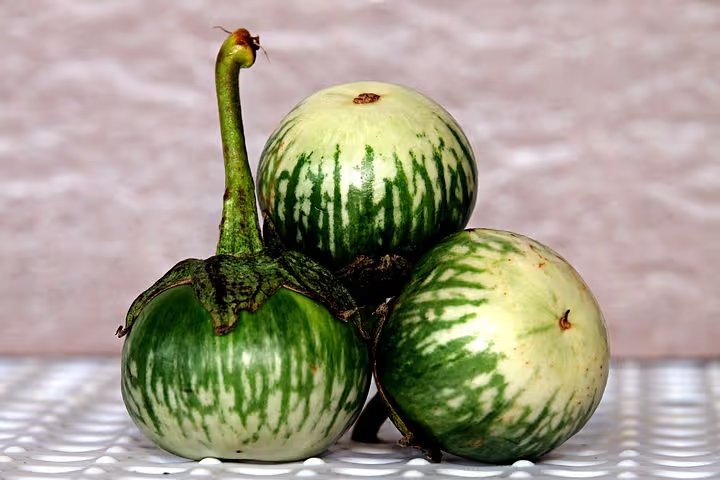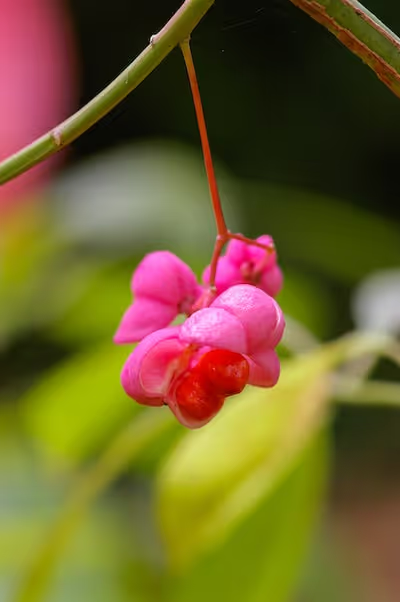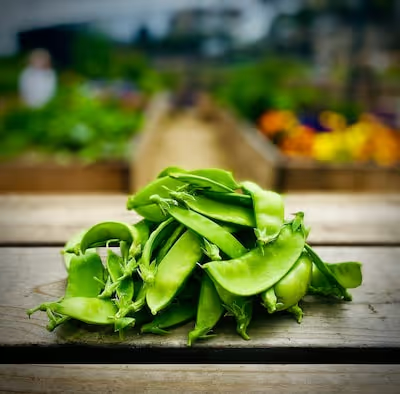Growing Mashua: A Stylish Addition to Your Edible Garden
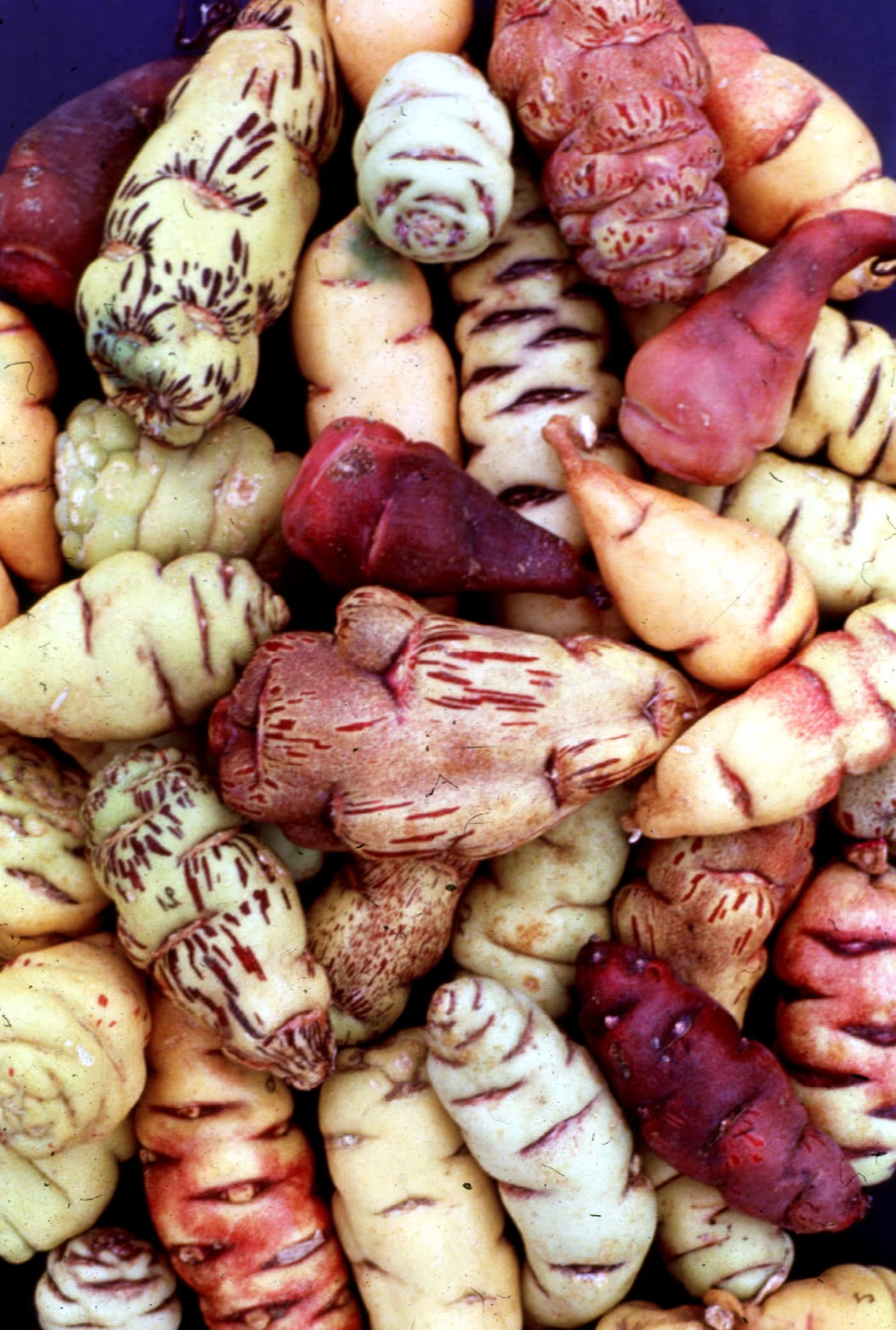
Growing Mashua
Growing mashua rewards gardeners with spicy, peppery roots and effortless maintenance. Native to the cool Andes, mashua thrives in temperate climates, resists common pests, and matures in just over five months. Start by planting tubers in rich, well-drained soil, and you'll savor an abundant harvest—read on to master the simple art of cultivating this flavorful Peruvian tuber.
Cheatsheet: Grow Lush, Edible Mashua Tubers
🌱 Site & Soil
- Full sun or partial shade
- Loamy, well-drained soil (pH 5.5–7.0)
- Add compost for rich yields
🗓️ Planting
- Start tubers indoors if frost risk persists
- Transplant outdoors after soil reaches 50°F (10°C)
- Plant 3 in (8cm) deep, 24 in (60cm) apart
💧 Water & Feed
- Moist soil, avoid waterlogging
- Mulch for even moisture, fewer weeds
- Top-dress compost mid-season
🌀 Train & Support
- Vines climb 6–10 ft (2–3m)
- Provide trellis or netting
- Pinch stems for bushier growth
🪴 Tools and products you'll need
- Mashua tubers
- Trowel, gloves
- Compost, mulch
- Trellis or netting
- Watering can or hose
🌼 Harvest & Storage
- Harvest after first frost (180–210 days from planting)
- Cure tubers 1 week, store cool & dark
- Yields: Up to 8lb (3.5kg) per plant
🥗 Nutrition & Self-sufficiency
- High in vitamin C, carbs, antioxidants
- Boosts food security in cool, damp climates
- Edible flowers, leaves, and tubers
🎨 Style Notes
- Vivid orange, red, purple tubers
- Striking foliage & nasturtium-like blooms
- Climbs arbors, fences, vertical gardens
-
Growing Mashua: A Stylish Addition to Your Edible Garden
I grow mashua for the sculptural vines, glowing nasturtium flowers, and a harvest that tastes like peppery parsnips mellowed by chestnut. It climbs like it owns the trellis, then quietly fills the soil with tubers when the days shorten.
Tropaeolum tuberosum comes from the Andes, where cool air, bright light, and late seasons shape it into a resilient crop. It behaves like a gourmet nasturtium with a pantry attached.
What mashua is, and why it belongs in a design-forward edible bed
Leaves look like dinner-plate nasturtium, flowers blaze orange to red, and the vines spiral with an artist’s sense of negative space. It threads through espaliers, fences, and obelisks without feeling messy.
The tubers cook up silky and mild, while raw slices bring wasabi heat thanks to glucosinolates. Cooking relaxes the bite and brings out a nutty sweetness.
"One of the highest yielding Andean root crops and remarkably free of pests," noted the National Research Council in Lost Crops of the Incas.
Growing Mashua at a glance
- Climate: cool, long season, tops touchy to frost at 32 F or 0 C.
- Light: full sun in cool summer regions, light afternoon shade in hot valleys.
- Soil: fertile, loose, well drained, pH 5.8 to 6.8, steady moisture.
- Spacing: 18 to 24 in or 45 to 60 cm; planting depth 3 to 4 in or 7 to 10 cm.
- Support: 6 to 8 ft or 1.8 to 2.4 m trellis, netting, or strings.
- Tuberization: short-day response after late summer, harvest late fall to early winter.
Site, soil, and climate fit
I give mashua my richest potato bed, then add more compost than feels polite. Light soils produce straighter tubers and far easier digging.
Ideal daytime temps sit around 60 to 75 F or 15 to 24 C. In heat spikes above 90 F or 32 C, give afternoon shade and mulch deep to keep roots cool.
Planting and training for vigor
Start certified tubers indoors 3 to 5 weeks before last frost in 1-gallon or 4-liter pots. Set transplants out after hard frost risk passes and soil hits 50 F or 10 C.
Lay tubers horizontally and keep the eye up. I train two main vines per plant and prune extras early to push root growth instead of canopy sprawl.
Trellis ideas that actually work
- Vertical strings from a top wire with a low guide wire to clip vines.
- Cattle panel arch for an edible tunnel with dappled shade for greens.
- Bamboo tripod with cross rungs for quick grabs as vines twist.
Water and feeding rhythm
Consistent moisture makes better tubers, so I water like potatoes: deep, even, and boring. Avoid waterlogging or you will court rot and forfeit storage life.
Side-dress with a balanced organic granular at planting, then again when vines hit knee height. Excess nitrogen grows sails instead of roots.
Photoperiod, patience, and the harvest window
Mashua bulks tubers as days shorten in late summer and fall. The tops can take a light nip, then tubers swell fast in the cool soil, so I hold my nerve.
I harvest after the first killing frost blackens the canopy or once soil temps slide toward 40 to 45 F or 4 to 7 C. A wide fork and calm hands save the prettiest skins.
Trials summarized by the International Potato Center describe mashua as high-yielding in cool, moist climates, with production peaking as daylength declines.
Flavor management and kitchen notes
Raw mashua carries mustard-family heat that wakes up slaws and ceviche. Roast at 400 F or 205 C with duck fat and thyme and the spice melts into sweetness.
Sun-curing the dug tubers for a day or two on dry racks softens pungency further. Andean growers have long used brief sun exposure to mellow flavor before storage.
Container culture for small spaces
Mashua behaves beautifully in 15 to 20 gallon or 57 to 75 liter containers with a tall frame. I use a peat-free mix cut with 20 percent compost and a slow-release organic fertilizer at label rate.
Water daily in hot spells and keep the pot shaded at the base. Expect fewer but larger tubers per plant in containers.
Pests, diseases, and companions
Mine rarely see aphids or whiteflies, a perk attributed to glucosinolates that many pests dislike. Slugs do sample tender tips in spring, so I ring stems with copper and keep debris cleared.
Rotate away from other tuber crops yearly, and avoid soggy soils to prevent soft rots. In mixed beds, I interplant with sweet corn or sunflowers and let mashua climb living stakes.
"Mashua is conspicuously pest-resistant," wrote the National Research Council, echoing on-farm experience across Andean regions.
Yields, curing, and storage
In my coastal plot, mature plants average 3 to 6 lb or 1.4 to 2.7 kg of tubers, with standout hills pushing higher in mild autumns. Reports from Andean farms commonly cite 20 to 30 t/ha under good management, according to Lost Crops of the Incas and CIP compilations.
Brush soil off, air dry 2 to 3 days, then store at 40 to 45 F or 4 to 7 C in breathable crates at high humidity. Handle gently, since skins bruise if you rush.
Varieties and buying guide
Look for edible lines from Andean-crop specialists, not ornamental-only selections. Tubers come white, yellow, orange, and red-skinned, often with speckling, and flavor ranges from mild to peppery.
- White or cream types: milder flavor, dependable yield.
- Orange or red skins: showy plate appeal, more pepper when raw.
- Ornamental climbing forms: abundant flowers, modest tuber set, better for arches and fall color than the pantry.
Buy disease-free seed tubers from reputable vendors. Avoid supermarket novelty tubers of unknown storage history, since they sprout weakly.
Season planning by latitude
Plant as early as your spring soil allows in cool regions, then baby the vines through summer to build biomass for fall tuberization. In warm zones, provide afternoon shade, mulch heavy, and aim for a late fall harvest before soil cools too far.
Short-season gardeners can pre-sprout tubers under lights 4 weeks before transplant to steal time. I also throw frost cloth over trellises for the first autumn cold snaps to keep leaves photosynthesizing a bit longer.
Fertilizer and soil test playbook
A soil test pays here. Target a moderate nitrogen program with adequate potassium and calcium for storage quality.
I blend in rock phosphate or bone meal where tests show low P, then add kelp meal for K and micronutrients. Mashua likes boron in the sweet spot, so avoid overdoing borax mixes.
Common mistakes and quick fixes
- Too much shade: lanky vines, thin tubers; add light and prune to two leaders.
- Too much nitrogen: lush canopy, small yield; cut back and feed with a balanced 5-5-5 rate.
- Dry swings: split or knobbly tubers; mulch 3 in or 7.5 cm and water evenly.
- Late planting: leaf show, little root; start earlier or use transplants with strong rootballs.
Comparisons and smart alternatives
- Oca (Oxalis tuberosa): tangy, sun-sweetened tubers; similar short-day habit but lower vines.
- Ulluco (Ullucus tuberosus): jewel skins, slippery texture; fussier about heat and storage.
- Yacon (Smallanthus sonchifolius): crisp, juicy tubers for salads; day-neutral bulking with stout stems, no trellis needed.
- Potato (Solanum tuberosum): earlier yield; more pest pressure and less ornamental value.
Shopping list for Growing Mashua
- Edible mashua seed tubers from a specialist grower or seed cooperative.
- 6 to 8 ft or 1.8 to 2.4 m trellis, strings, or a cattle panel arch.
- Compost, balanced organic fertilizer, and mulch.
- Wide digging fork, stacking harvest crates, breathable storage bags.
- Frost cloth for late-season leaf protection.
Field notes from my beds
I stagger plantings two weeks apart in spring to test microclimates, then reserve the best pocket for next year. The bed by the west fence, with late light and wind shelter, beats my open plot every time.
On tasting days, I slice a raw tuber paper-thin over smoked trout and apple and the heat hums along like good horseradish. Roasted with garlic and miso, it turns comfort-food sweet.
Nutrition and folklore
Mashua delivers vitamin C and bioactive glucosinolates associated with the mustard clan, which ties to its pest resistance and peppery snap. Historical notes from Andean sources repeat its reputation as an anaphrodisiac, a detail that says more about folklore than modern nutrition science.
Credible references I trust in practice
- National Research Council. Lost Crops of the Incas. Descriptions of yield potential, pest resistance, and culinary use.
- International Potato Center (CIP). Technical summaries on Andean roots and tubers, including mashua’s short-day tuberization and cool-climate performance.
- Plants For A Future database. Botanical notes and edible uses for Tropaeolum tuberosum.
- Regional extension bulletins on Andean tubers for practical spacing, storage, and fertility guidelines.
Frequently Asked Questions About Growing Mashua
What conditions suit mashua best for optimal growth?
Mashua flourishes in cool, moist climates similar to its Andean origins. Select a planting area with partial shade and ensure temperatures typically remain between 50°F to 70°F (10°C to 21°C). Protect plants from extreme heat, prolonged freezing, and harsh winds.
What soil type encourages mashua productivity?
Mashua plants prefer well-draining, fertile soil that retains moisture without becoming soggy. Incorporate plenty of organic matter, such as compost or well-rotted manure, aiming for a slightly acidic to neutral soil pH of around 6.0 to 7.0.
When is the ideal planting time for mashua?
Plant mashua tubers in early spring, once the last frost has passed and soil temperatures reach above 45°F (7°C). In cooler climates, consider an indoor early start approximately 4–6 weeks before transplanting outdoors.
How often and how deeply should mashua plants be watered?
Water consistently to keep soil evenly moist, providing around 1 inch (2.5 cm) weekly, adjusting frequency based on weather conditions. Drip irrigation or gentle watering methods help maintain proper soil moisture without waterlogging.
Does mashua require fertilizer or special nutrients?
A moderate application of balanced organic fertilizer, rich in phosphorus and potassium, encourages tuber development. Apply compost tea or liquid seaweed mid-season, ensuring vigorous foliage growth and healthy tubers.
What pests or diseases affect mashua, and how can I prevent them?
Mashua usually resists pests, but watch for aphids and slugs. Manage small infestations manually or with organic solutions such as insecticidal soaps. Adequate spacing, proper watering techniques, and crop rotation practices minimize fungal diseases and ensure plant health.
How and when is mashua harvested?
Harvest timing occurs in late autumn, generally after the plant foliage has yellowed or wilted due to cool temperatures. Carefully dig around the base to lift tubers without damage, then allow them to cure in a cool, dry place for improved storage.
What's the best way to store harvested mashua tubers?
Store cured mashua tubers in a cool, dark, and humidity-controlled environment at approximately 40°F–50°F (4°C–10°C). Under optimal storage conditions, tubers remain viable and edible for several months following harvest.
Growing Mashua rewards the adventurous gardener with bold foliage, edible tubers, and a story worth telling at the table. Give it sun, rich soil, and a bit of patience—watch those vines climb and the garden come alive. Its peppery roots bring color and bite to your kitchen, while the flowers steal the show long before harvest. If you crave something different, rutabaga or turnip are classic root crops, but mashua brings attitude. Bold, beautiful, and edible—this is a plant for growers who want something with grit and style. Give mashua a spot and let it surprise you.
The Homesteader's Take: Mashua's Role in Edible Self-Sufficiency
Reliable Yield Under Challenging Conditions
- Cold-resistant: Grows vigorously at altitudes over 9,800 ft (3,000 m) and handles frosts down to 23°F (-5°C).
- Soil versatility: Thrives in poorer soils without fertilizers, improving garden self-sustenance.
Integrated Pest Management Advantage
- Natural pest-deterrent: Planting alongside potatoes reduces potato pests by nearly 30%.
- Attracts beneficial insects: Flowers invite pollinators, enhancing your edible garden ecosystem.
Nutritional Boost for Homestead Diets
- High Vitamin C content: Up to 77 mg per 100 g boosts immunity naturally.
- Rich in antioxidants: Protects cellular health and promotes longevity.
Practical Storage and Preservation Methods
- Long shelf-life: Tubers store easily up to 6 months in cool, dry conditions (45-50°F or 7-10°C).
- Simple preservation: Quickly pickled, fermented, or dried for off-season nutrition.
Versatile Culinary Applications
- Edible leaves and flowers: Nutrient-rich greens enhance salads and stir-fries.
- Flavor variety: Tubers offer peppery taste raw; cooked, they mellow to a mild sweetness.
Find out which plants will thrive in your garden!
Answer a few fun questions and get custom plant recommendations perfect for your space. Let’s grow something amazing together!

start your season
